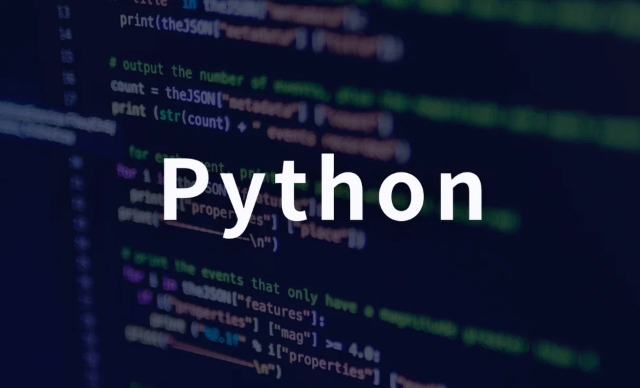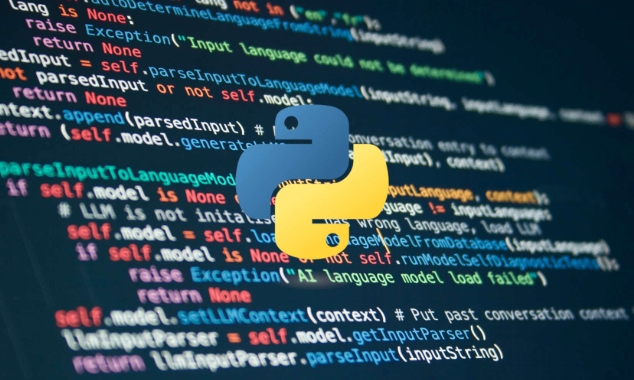The purpose of ensuring_ascii=False is to retain the output of non-ASCII characters as is. When Python processes JSON data, json.dumps() or json.dump() converts Chinese, Japanese and other characters into Unicode escape forms by default, and setting ensure_ascii=False can avoid this behavior and make the output more intuitive; common scenarios include writing files, API return values, and debugging output; when using it, you need to pay attention to cooperating with encoding="utf-8" to prevent garbled code problems.

When using Python to process JSON data, ensure_ascii=False is a frequently occurring parameter. It is mainly used in json.dumps() or json.dump() functions, and its function is to control whether the output is ASCII encoding.

Simply put: if you want to keep Chinese, Japanese and other non-ASCII characters output as it is instead of becoming Unicode escaped, you need to set ensure_ascii=False .
Why do I need to ensure_ascii=False
Python's json.dumps() will convert non-ASCII characters into Unicode escape sequences by default (for example, "Chinese" will be converted to \u4e2d\u6587 ). This is OK in some scenarios, but if you want to output more readable text, especially when writing to a file or sending it to the front end, this kind of escape seems redundant.

For example:
import json
data = {"name": "Zhang San", "city": "Beijing"}
# Default print(json.dumps(data))
# Output: {"name": "\u5f20\u4e09", "city": "\u5317\u4eac"}
# Set ensure_ascii=False
print(json.dumps(data, ensure_ascii=False))
# Output: {"name": "Zhang San", "city": "Beijing"} As you can see, after adding ensure_ascii=False , the output string is more intuitive.

Common application scenarios
- Write to JSON file : Chinese characters are preserved when saving data.
- API interface return value : When front-end and back-end interaction, avoid the front-end decoding again.
- Logging or debugging output : it is more convenient to view the original content.
For example, writing to a file:
with open("data.json", "w", encoding="utf-8") as f:
json.dump(data, f, ensure_ascii=False) Note: When writing to the file, you must also specify encoding="utf-8" ; otherwise, it may still be garbled.
A few points that are easy to ignore
-
ensure_ascii=Falseonly affects the output format and does not affect the content of the data itself. - If you do not need to be compatible with old systems or special coding environments, it is generally recommended to add this parameter.
- In web development, many frameworks have already dealt with this problem by default, but if you manually construct JSON strings yourself, you must remember to set them.
Several common combinations:
-
json.dumps(data, ensure_ascii=False) -
json.dumps(data, ensure_ascii=False, indent=2) -
json.dump(data, file_handler, ensure_ascii=False)
Basically that's it. If you use it too much, you will find ensure_ascii=False is a small switch, but if it is not turned on, it will easily make the output ugly and troublesome.
The above is the detailed content of Python ensure_ascii=False example. For more information, please follow other related articles on the PHP Chinese website!

Hot AI Tools

Undress AI Tool
Undress images for free

Undresser.AI Undress
AI-powered app for creating realistic nude photos

AI Clothes Remover
Online AI tool for removing clothes from photos.

Clothoff.io
AI clothes remover

Video Face Swap
Swap faces in any video effortlessly with our completely free AI face swap tool!

Hot Article

Hot Tools

Notepad++7.3.1
Easy-to-use and free code editor

SublimeText3 Chinese version
Chinese version, very easy to use

Zend Studio 13.0.1
Powerful PHP integrated development environment

Dreamweaver CS6
Visual web development tools

SublimeText3 Mac version
God-level code editing software (SublimeText3)

Hot Topics
 Using std::chrono in C
Jul 15, 2025 am 01:30 AM
Using std::chrono in C
Jul 15, 2025 am 01:30 AM
std::chrono is used in C to process time, including obtaining the current time, measuring execution time, operation time point and duration, and formatting analysis time. 1. Use std::chrono::system_clock::now() to obtain the current time, which can be converted into a readable string, but the system clock may not be monotonous; 2. Use std::chrono::steady_clock to measure the execution time to ensure monotony, and convert it into milliseconds, seconds and other units through duration_cast; 3. Time point (time_point) and duration (duration) can be interoperable, but attention should be paid to unit compatibility and clock epoch (epoch)
 How does PHP handle Environment Variables?
Jul 14, 2025 am 03:01 AM
How does PHP handle Environment Variables?
Jul 14, 2025 am 03:01 AM
ToaccessenvironmentvariablesinPHP,usegetenv()orthe$_ENVsuperglobal.1.getenv('VAR_NAME')retrievesaspecificvariable.2.$_ENV['VAR_NAME']accessesvariablesifvariables_orderinphp.iniincludes"E".SetvariablesviaCLIwithVAR=valuephpscript.php,inApach
 How does a HashMap work internally in Java?
Jul 15, 2025 am 03:10 AM
How does a HashMap work internally in Java?
Jul 15, 2025 am 03:10 AM
HashMap implements key-value pair storage through hash tables in Java, and its core lies in quickly positioning data locations. 1. First use the hashCode() method of the key to generate a hash value and convert it into an array index through bit operations; 2. Different objects may generate the same hash value, resulting in conflicts. At this time, the node is mounted in the form of a linked list. After JDK8, the linked list is too long (default length 8) and it will be converted to a red and black tree to improve efficiency; 3. When using a custom class as a key, the equals() and hashCode() methods must be rewritten; 4. HashMap dynamically expands capacity. When the number of elements exceeds the capacity and multiplies by the load factor (default 0.75), expand and rehash; 5. HashMap is not thread-safe, and Concu should be used in multithreaded
 Why We Comment: A PHP Guide
Jul 15, 2025 am 02:48 AM
Why We Comment: A PHP Guide
Jul 15, 2025 am 02:48 AM
PHPhasthreecommentstyles://,#forsingle-lineand/.../formulti-line.Usecommentstoexplainwhycodeexists,notwhatitdoes.MarkTODO/FIXMEitemsanddisablecodetemporarilyduringdebugging.Avoidover-commentingsimplelogic.Writeconcise,grammaticallycorrectcommentsandu
 how to avoid undefined index error in PHP
Jul 14, 2025 am 02:51 AM
how to avoid undefined index error in PHP
Jul 14, 2025 am 02:51 AM
There are three key ways to avoid the "undefinedindex" error: First, use isset() to check whether the array key exists and ensure that the value is not null, which is suitable for most common scenarios; second, use array_key_exists() to only determine whether the key exists, which is suitable for situations where the key does not exist and the value is null; finally, use the empty merge operator?? (PHP7) to concisely set the default value, which is recommended for modern PHP projects, and pay attention to the spelling of form field names, use extract() carefully, and check the array is not empty before traversing to further avoid risks.
 PHP prepared statement with IN clause
Jul 14, 2025 am 02:56 AM
PHP prepared statement with IN clause
Jul 14, 2025 am 02:56 AM
When using PHP preprocessing statements to execute queries with IN clauses, 1. Dynamically generate placeholders according to the length of the array; 2. When using PDO, you can directly pass in the array, and use array_values to ensure continuous indexes; 3. When using mysqli, you need to construct type strings and bind parameters, pay attention to the way of expanding the array and version compatibility; 4. Avoid splicing SQL, processing empty arrays, and ensuring data types match. The specific method is: first use implode and array_fill to generate placeholders, and then bind parameters according to the extended characteristics to safely execute IN queries.
 PHP check if a string starts with a specific string
Jul 14, 2025 am 02:44 AM
PHP check if a string starts with a specific string
Jul 14, 2025 am 02:44 AM
In PHP, you can use a variety of methods to determine whether a string starts with a specific string: 1. Use strncmp() to compare the first n characters. If 0 is returned, the beginning matches and is not case sensitive; 2. Use strpos() to check whether the substring position is 0, which is case sensitive. Stripos() can be used instead to achieve case insensitive; 3. You can encapsulate the startsWith() or str_starts_with() function to improve reusability; in addition, it is necessary to note that empty strings return true by default, encoding compatibility and performance differences, strncmp() is usually more efficient.
 How to Install PHP on Windows
Jul 15, 2025 am 02:46 AM
How to Install PHP on Windows
Jul 15, 2025 am 02:46 AM
The key steps to install PHP on Windows include: 1. Download the appropriate PHP version and decompress it. It is recommended to use ThreadSafe version with Apache or NonThreadSafe version with Nginx; 2. Configure the php.ini file and rename php.ini-development or php.ini-production to php.ini; 3. Add the PHP path to the system environment variable Path for command line use; 4. Test whether PHP is installed successfully, execute php-v through the command line and run the built-in server to test the parsing capabilities; 5. If you use Apache, you need to configure P in httpd.conf






